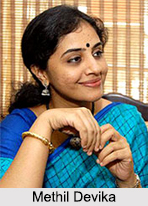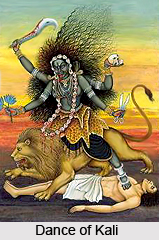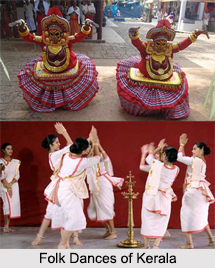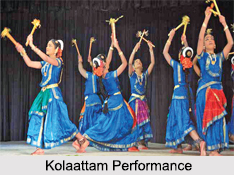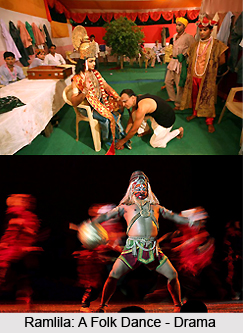 Ramlila is considered as a dance form having spiritual connectivity; thus a performance of Ramlila creates a festive atmosphere with peaceful waves. Ramlila is generally performed during the festival Dussehra in Uttar Pradesh.
Ramlila is considered as a dance form having spiritual connectivity; thus a performance of Ramlila creates a festive atmosphere with peaceful waves. Ramlila is generally performed during the festival Dussehra in Uttar Pradesh.
Ramlila is celebrated for ten days that ends on Dussehra festival, which falls on the tenth day of the bright half of Ashvin month coming in September-October. This festival is celebrated for the victory of goodness represented by Lord Rama over Ravana representing evil forces. At the time of the performance of the Ramlila, the Ramayana is constantly recited with its verses accompanied by dance and pleasant music.
It is an amazing mixture of dance, music, mime, Abhinaya and poetry that is represented in front of enthusiastic and religious audiences. The original art form of Ramlila was unique but with the time, many local variations of Ramlila are added in different parts of the Indian state. These changes are seen primarily with changes in terms of dialogues and music of dance. This art form is performed almost in all villages during the Dussehra festival. Ramlila performance, apart from being rich in the dancing steps is also rich in its costumes, jewellery, masks, headgear, make-up and decoration.
History of Ramlila
Historians believe that the Megha Bhagat, who was a disciple of Tulsidas, the author of Ramacharitamanas (which was created during 1625 A.D.), had arranged for the very first Ramlila shows. There are certain opinions presented by some scholars which state that Ramlila had originated in the period between 1200 and 1500 A.D. The Mughal Emperor Akbar is believed to have been the spectator of a Ramlila performance during his reign. As per records of Krishna Das Kaviraj, in his hagiography of the Indian saint Chaitanya, latter had entered into a trance when he was performing the role of Hanuman during a Ramlila play in the region of Puri. This statement bears evidence of the fact that Ramlila was existent prior to the composition of Ramacharitamanas. Ramlila performances were spread like wildfire in the main heartland of India, soon after Tulsidas had rendered the Ramacharitamanas in the Avadhi language, which was a language utilized by the common inhabitants of India during that time. Prior to this, Ramlila used to be staged only in the Sanskrit language, which was the classical language through which the Brahmins communicated. Consequently, vast quantities of natives were deprived of the joy of witnessing a Ramlila performance.
In 1830`s, Ramlila started to be exhibited at Ramnagar, Varanasi, across the Ganga River. Maharaja Udit Narayan Singh, Kashi Naresh had arranged for those performances of Ramlila. During the rule of Maharaj Isvari Prasad Singh, gradually Ramilila gained more popularity and enjoyed the patronage of rulers of the Royal House of Benares. Ramlila flourished since under their patronage, a gigantic environmental theatre was constructed which possessed a capacity to hold above 1, 00, 000 people. The Maharajas sponsored the plays which continued for 31 days.
Some legends assert that Chota Mirzapur was the first village, located in Varanasi which staged Ramlila. Elaborate sets with props and dialogues impart a magical appeal to the Ramlila plays staged here. Actors enjoy the privilege of enacting roles in permanent set structures. Lanka, Janakpuri, Panchavati and Ashok Vatika are represented by some temporary structures. The `Svarupas` or the different characters of the epic of Ramayana are selected amongst regional actors. During Dussehra, Ramlila is observed with great pomp and is attended by innumerable `sadhus` known as `Ramayanis`. At the conclusion of the Ramlila act, the actors, accompanied by the audience, chant `Bolo! Raja Ramchandra ki Jai` or `Har Har Mahadev`.
Styles of Ramlila
Currently, various styles of Ramlila have evolved and are practised in unique ways throughout Varanasi in Uttar Pradesh. Tebleaux pageants or `Jhankis` are also exhibited in some regions, which represent the pantomime style. A 2008 UNESCO report has declared that Ramlilas of the areas of Satna, Ramnagar, Vrindavan, Ayodhya, Almora and Madhubani are quite renowned. Uday Shankar had developed a musical rendition of the `katha` in the Almora or Kumaon style, which was developed further by Brijendra Lal Sah and Mohan Upreti. Certain couplets of Ramacharitamanas are sung in chorus, apart from reciting them aloud. This is known as the `opera style` of presenting Ramlila. Professional troupes known as `Mandalis` perform the acts of Ramlila.
Several Ramlila plays are staged in regional dialects or even in the `Khadi Boli` dialect. At times, the element of humour is also injected into these plays. Chitrakoot is the place which is quite reputable for its staging of Ramlila during the last week of February, particularly on the day of Shivaratri. Agra`s `Ram Barat` is yet another exciting representation of Ramlila. Ramlilas are also conducted in various regions of the city of Delhi, especially in the premises of the Ramlila Grounds, which is located near the Red Fort.
Format of Ramlila
Amateur actors enact the roles of Svarupas in Ramlila in open-air theatres during the night. A priest recites the verses from Ramayana during transformation of scenes, which adds to the dramatic thrill. Such narratives are based on Gosvami Tulsidas` version of the epic of Ramayana. Musicians and `Dhol` drummers also participate in this Ramlila.
Ramlila in Abroad
Ramlila has developed into a well appreciated art form which has conquered the furthest corners of the world. It is also immensely popular in countries like Nepal, Australia, United States, Mauritius, Pakistan, Netherlands, Canada, Fiji, South Africa, Guyana, Trinidad and Tobaggo and Great Britain.
The celebration of Ramlila in Ramnagar Fort at Varanasi held annually is very special and popular. Ramlila is enacted on a huge area of about three square miles across the Ganga River for thirty days. Here, the performance includes fights, bouts, sword dances, acrobatics, etc. The local Maharaja does the function and offers worship to Lord Rama daily with belief and respect.
